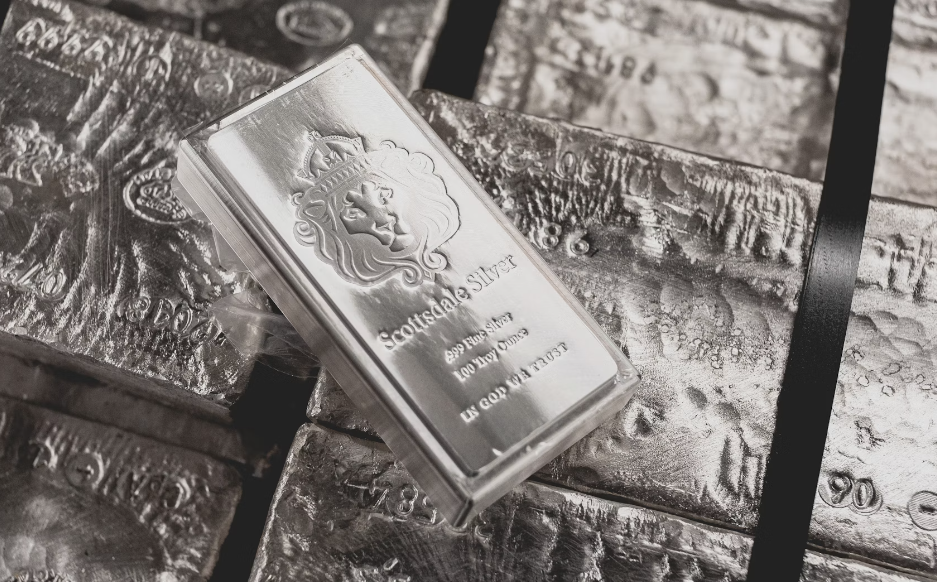Silver, often referred to as “the poor man’s gold,” has been sought after for centuries for its beauty, industrial uses, and store of value. For first-time buyers looking to enter the silver market, it’s crucial to understand its dynamics and the various investment options available.
This comprehensive guide, will discuss the intricacies of the silver market and provide invaluable tips for those embarking on their silver investment journey.
Understanding the Silver Market
The silver market operates under various influences that affect its dynamics. Here’s a brief overview:
What Makes Silver Valuable
Aside from its aesthetic appeal, silver boasts remarkable properties that render it indispensable in various industries. Its high electrical conductivity makes it vital in electronics manufacturing, while its reflective properties are exploited in mirrors and photography. In addition, silver’s antimicrobial properties have led to its use in medical applications, underscoring its versatility beyond its monetary value.
Market Dynamics
Silver prices are influenced by a myriad of factors, making it crucial for investors to stay informed. In addition to industrial demand, geopolitical tensions, and economic indicators, investor sentiment also plays a significant role in determining silver prices. Factors such as changes in interest rates, inflation expectations, and currency movements can all impact silver’s attractiveness as an investment asset.
Types of Silver Investments
When it comes to investing in silver, there are several options to consider; here are three popular ones:
Physical Silver
Investing in physical silver offers tangible ownership of the metal, providing a sense of security for many investors. Silver bullion bars and coins are the most common forms of physical silver, with purity levels ranging from 99.9% for investment-grade bullion to lower-purity coins with numismatic value. Investors should prioritize reputable dealers and ensure proper authentication to avoid counterfeit products.
Silver ETFs
Exchange-Traded Funds (ETFs) have emerged as a convenient way for investors to gain exposure to the silver market without the complexities of owning physical bullion. Silver ETFs typically hold silver bullion or derivative contracts backed by physical silver, allowing investors to track the price of silver without the logistical challenges of storage and security.
Silver Mining Stocks
Investing in silver mining stocks provides indirect exposure to the silver market through companies engaged in the exploration, development, and production of silver. While mining stocks offer potential leverage to silver prices, they also come with additional risks such as operational challenges, regulatory issues, and geopolitical risks specific to mining jurisdictions.
Tips for Buying Silver
Buying silver requires careful consideration and planning; here are some important factors to keep in mind:
Setting Investment Goals
Before diving into the silver market, investors should establish clear investment goals tailored to their risk tolerance, investment horizon, and financial objectives. Whether seeking capital preservation, portfolio diversification, or speculative gains, aligning investment goals with appropriate strategies is essential for long-term success.
Research and Due Diligence
Thorough research is important when buying silver, especially for first-time buyers. Beyond price considerations, factors such as dealer reputation, product authenticity, and transactional transparency should be carefully evaluated. Online reviews, industry forums, and independent ratings can provide valuable insights into the credibility of silver dealers.
Understanding Premiums and Fees
While the spot price of silver serves as a benchmark for pricing, investors should be mindful of premiums and fees associated with buying physical silver. Premiums, or the markup over the spot price, vary depending on factors such as product type, weight, and market demand. Additionally, shipping costs, insurance fees, and transactional expenses can impact the overall cost of acquiring silver.
Storage and Security
Proper storage and security measures are imperative for safeguarding physical silver investments. For investors opting to store silver at home, secure safes or vaults offer protection against theft and damage. Alternatively, third-party storage facilities provide professional storage solutions with added insurance and security features for peace of mind.
Tips and Considerations for Selling Silver
Selling your silver involves strategic decisions and considerations; here are two key aspects to keep in mind:
Market Timing
Deciding when to sell silver requires careful consideration of market conditions, investor sentiment, and individual financial goals. While attempting to time the market perfectly may prove elusive, monitoring price trends and setting realistic selling targets can help maximize returns and mitigate downside risks.
Selling Strategies
When it comes time to sell silver, investors have several options to consider. Selling back to reputable dealers or bullion banks offers convenience and liquidity, albeit at potentially lower prices due to buyback spreads. Alternatively, peer-to-peer platforms and online marketplaces provide opportunities for direct sales to other investors, albeit with added complexities and risks.
Risks and Challenges
Silver investments come with risks and challenges that investors need to be aware of; here are two significant ones:
Price Volatility
Due to the way the market works, silver prices are naturally unstable, which means they can change quickly. While volatility presents profit opportunities, it also entails risks for investors, particularly those with shorter investment horizons or leveraged positions. Implementing risk management strategies such as diversification and asset allocation can help mitigate the impact of price volatility on investment portfolios.
Counterfeit and Fraud Risks
The proliferation of counterfeit silver products underscores the importance of vigilance and due diligence when buying silver. Counterfeit coins and bars often mimic genuine designs and hallmarks, making them difficult to detect without careful inspection. Investing in reputable brands, purchasing from trusted dealers, and verifying product authenticity through third-party authentication services can help mitigate the risk of falling victim to counterfeit schemes.
Get the Best Silver Today!
With this guide’s advice, investors can confidently navigate the silver market and make choices that meet their goals. Whether you want to protect your wealth, diversify your portfolio, or make money on speculation, silver is a great investment that has the potential for long-term growth and value increase.
When exploring the silver market, don’t miss the opportunity to buy silver in Australia, where you can access quality products and services tailored to your investment needs.


